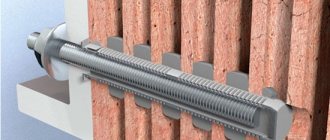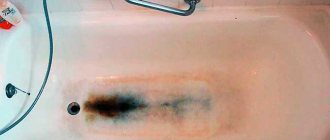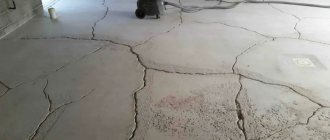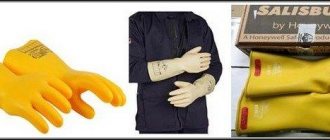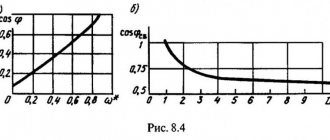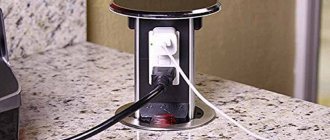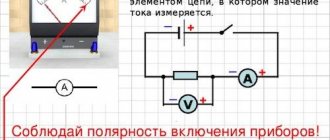Key Features
Just 20 years ago, liquid anchor was considered an expensive novelty and was used only as an experiment. Since then, the composition and technology of such anchors have stepped forward, which has made this type of fasteners preferable and cheaper when working with complex materials. Quite often this technology is called adhesive dowel.
The chemical anchor is a synthetic two-component resin for connecting and fixing metal products to the base material. This solution appeared on the market relatively recently, but due to its outstanding characteristics it has won consumer recognition. Chemical anchors are most often used when conventional plastic or metal anchors are unable to hold the structure in place.
Liquid anchor has found its use when working with:
- dense concrete;
- porous materials;
hollow building products.
As for porous materials, expanded clay concrete, cellular concrete, sandstone and limestone should also be highlighted among them. If we are talking about construction products, then in this case we need to mention porous ceramics and bricks.
How to use a chemical anchor
To use a chemical anchor, no special knowledge or practical skills are required. The procedure is quite simple and straightforward.
If an ampoule anchor is used, the ampoule should be placed in the hole and split with a metal rod. As a result, the components mix and harden.
When using the substance in cartridges, the required amount of adhesive mixture is squeezed into the cleaned hole, after which a metal rod is installed. After the time specified in the technical specifications, the mixture completely hardens, thereby ensuring reliable fixation of the rod.
Types of liquid anchors
Liquid anchor is offered for sale in two varieties, including ampoule and injection. The first ones come in one- and two-component compositions. As for injectables, they are sold in tubes and cartridges, and their second name is capsule.
Ampoule liquid anchors are represented by glass cylinders, inside of which there is a resin, which hardens when exposed to air. Before using this solution, holes are drilled in the material into which an ampoule with polyester resin is placed. At the next stage, an anchor in the form of a metal pin is screwed into it. The ampoule breaks, releasing the glue, which sets. The pieces of glass act as reinforcement.
Liquid chemical anchor can be mixed with styrene, and the setting will depend on the air temperature and the grade of the material. Injection anchors are used as follows. At the first stage, a hole is made in the concrete, the internal cavity of which is well cleaned. The glue is squeezed out there and the fastening element is inserted. During the hardening process, the composition fills all pores and irregularities. This technique is more suitable for empty construction materials.
Varieties
Anchors that are used for aerated concrete are divided into several separate types according to the fastening method:
Each type has its own advantages and disadvantages, as well as fastening methods. It is worth dwelling separately on the features of both types.
Chemical
According to the principle of fixation, each chemical element is based on the following: a binder type of substance penetrates into a porous material such as foam concrete or aerated concrete, then this substance hardens and forms a monolithic compound when hardened. This system is used infrequently, and yet you simply cannot do without it when the anchors need to withstand a fairly large load. One capsule contains polymers with organic resins.
Let's look at how to carry out proper installation.
- To begin with, a hole is drilled in the porous aerated concrete building material. It is better to use an ordinary drill for this work.
- The ampoules are inserted into pre-drilled holes that contain specialized chemical compounds.
- It is necessary to break the ampoules, and then insert a metal rod into the same hole.
- Now all that remains is to wait for the binding element to harden. Usually several hours, and sometimes even a day, are allocated for this.
This system has its own advantages:
- the ability to withstand enormous loads;
- dampness and moisture do not penetrate under the anchor at all;
- there will be no cold bridges at the attachment point;
- the connection is sealed.
If we list the disadvantages of this design, then we can include here the impossible dismantling of the anchors. It is also worth noting that such products are quite expensive compared to other types of fastenings.
Massa-Henke and HILTI are the most famous manufacturers for the production of chemical fasteners. Products from global manufacturers have a correspondingly higher price, but here you can remain completely confident that the quality of the installation system will remain at the same level.
Epoxy
Chemical anchor bolts, created on the basis of epoxy resin, are used during installation on a very strong base or base, for example, concrete. These bolts with a similar effect can hold suspended structures that are attached to concrete surfaces and not only, and the bolts also perfectly hold suspended structures attached to a reinforced concrete floor beam. These products are often used to fasten a variety of equipment.
The epoxy type of anchor bolts has its own advantages.
- It is possible to install these elements even in water or when moisture exists.
- Installation using these bolts can be done indoors or from the inside.
- In the fastening hole, the local type of stress is minimized, so there are no cracks in the anchor connection area.
- The resin does not contain styrene.
- The products are used both for fastening smooth studs and threaded ones. This property is constantly used when installing reinforcing bars.
The installation of anchors made with epoxy will also be affected by the air, or rather, its temperature. The first setting occurs within 10 minutes, and then the time can drag on up to 180 minutes. Complete hardening occurs after 10-48 hours. Only after 24 hours can structures be loaded.
Polyester
This type is widely used for fixing various parts of a suspended facade onto an aerated concrete base; it is also used for mounting a translucent facade, a communication network and engineering. In the form of a rod, only threaded pins are used; they can be metal or plastic.
To obtain an even stronger connection, it is recommended to use a special conical drill when drilling a hole. Polyester resins do not contain styrene at all; therefore, such resins can be confidently used for fixing suspended parts located in a building.
Mechanical
When installing mechanical anchors, a spacer of fasteners helps to achieve reliable fixation, which firmly holds the body of the anchor inside the porous building material. Typically, such fasteners consist of a special tube that is inserted into the holes. It changes its geometric shape as a result of screwing in or when the internal rod is driven in.
Among the advantages of this fastener:
- anchors are installed in solid aerated concrete quite simply;
- it doesn’t take a lot of time to install the system;
- the entire load will be distributed evenly in the future;
- after mounting the anchor, you can proceed immediately to installing the hanging elements;
- The fastening system can always be dismantled when necessary.
It is easy to install the rods:
- First, drill a hole of the required diameter;
- then insert the tube inside the finished hole;
- Upon completion of the work, you need to independently install a spacer type of rod, that is, one that can be screwed in and driven in at any time.
Most large manufacturers, for example, HPD, HILTI or Fisher GB, claim that they supply products with guaranteed quality. Typically, this type of anchor is made from fairly durable materials - stainless steel. And still, these products can be subject to oxidation, and this is perhaps the most basic drawback.
If, when constructing houses built from aerated concrete blocks, it is necessary to use anchors, then there are flexible connections. Domestic manufacturing companies are engaged in the production of these fasteners.
Anchors are made from a basalt-plastic rod. Sand coating on the anchor allows for the best adhesion to cement. In addition, a flexible connection created from steel material (stainless steel) is produced by the German company Bever.
Read also: How to connect CCTV cameras
A common type of fasteners that are used when working with aerated concrete also includes the butterfly anchor. This product is fixed using petal segments; they are firmly fixed to the aerated concrete porous building material. This type of product is supplied by the manufacturer MUPRO.
Features of the liquid anchor HIT-RE 100 from the manufacturer Hilti
Liquid anchor "Hilti" is very popular among consumers today. Among other varieties, you can find HIT-RE 100 on sale. This epoxy adhesive composition is intended for installing reinforcement and anchors in concrete. The base is epoxy glue. This mixture can be transported and stored at temperatures ranging from +5 to +25 °C. The anchor can be used in a fairly wide temperature range from -40 to +70 °C.
One of the main advantages of the anchor is the absence of the risk of cracks. The curing time of the mixture is extended, which allows elements to be adjusted during installation. The Hilti liquid anchor, the method of application of which will be mentioned below, is suitable for use indoors and outdoors in conjunction with material in different states, namely:
- damp;
- dry;
- filled with water.
The areas of use of the anchor are:
- replacement of fittings;
- fastening of steel structures;
- fixation of steel elements;
- connection and fastening of concrete reinforcement.
Cost and main features of Hit Re 500 liquid anchor from the manufacturer Hilti
The above-mentioned liquid anchor, the price of which is 2200 rubles. per package, excellent for holes that have an impressive diameter and depth, and were made using diamond technology. The material is reliable and high quality. It is capable of withstanding impressive loads and allows the installation of studs with a diameter exceeding M24.
There are no stresses in the concrete, this reduces the interaxial distances and the step to the edge. The anchor is flexible and can be used even in wet holes without reducing adhesion. The packaging has an economical dispenser, so you don’t have to put in much effort when injecting. The volume of construction waste is reduced thanks to unique packaging. The composition does not have a strong odor, so it can be used even indoors. Installed reinforcement and studs can be monitored thanks to the red color of the mixture.
Hilti liquid anchor consumption
The consumption of chemical anchor will vary depending on the diameter of the hole, its depth and the diameter of the anchor. If the last parameter is equal to M8, and the standard hole depth is 80 mm, then the filling volume of one cavity will be 4.14 ml. In this case, the hole diameter is equivalent to 10 mm. Using a 300ml cartridge, you can fill 72.4 holes.
With an anchor diameter of M10 and a standard hole depth of 90 mm, you will spend 6.71 ml of the composition with a cavity diameter of 12 mm. Using the 300ml cartridge, you will be able to fill 44.7 holes. If the diameter of the anchor reaches M30, and the standard hole depth is 280 mm, then the volume of the composition for one hole will be equivalent to 177.71 ml. These data are relevant for a hole with a diameter of 35 mm. By purchasing a cartridge whose volume is 385 ml, you will be able to fill 2.2 holes with the above-mentioned characteristics.
Operating principle of a chemical anchor
The principle of operation of the fastening system under consideration is that the working mixture, penetrating deeply into the pores and cavities of the material, hardens and ensures the fixation of metal rods even in cellular concrete and hollow brickwork.
Installing chemical anchors is not particularly difficult. The adhesive mixture is introduced into a pre-prepared hole, after which a threaded rod or conventional corrugated fittings are installed there. The filler tightly envelops the rod and hardens, thereby ensuring its reliable fixation. Depending on the type of chemical anchor, a special dispenser gun or a special capsule may be used to fill the hole with adhesive.
Chemical anchors are significantly superior to conventional anchor systems and dowels in their ability to withstand pull-out loads. The load-bearing capacity of chemical compounds allows the use of this method of fastening when installing balconies, canopies and even bridges, both above and below water.
It is especially advisable to use chemical anchors in cases where neither dowels nor conventional metal anchors are able to guarantee reliable fastening of structural elements to the base. Typically, this situation occurs if the base is a porous or hollow material, for example, shell rock, limestone, gas or foam concrete, cinder block, etc.
When using a fastener element, it must be remembered that the setting and complete hardening of the filler depends on its composition and can range from 5 to 24 hours.
Instructions for use
Drill holes before filling in one of two ways:
- using a diamond machine;
- use of a hammer drill.
The first technology is the most preferable, because the holes are perfectly round and even. As for the hammer drill technology, it should involve the use of calibrated drills. Sludge should be removed using a hand pump or compressor.
Installation of the anchor must be carried out using special equipment. If you decide to use liquid anchor, you must study the instructions for its use. At the next stage, the reinforcement should be installed using the immersion method, acting on it with little force. During this process, a small amount of the mixture will come to the surface, which should be removed before it hardens.
The master should use construction gloves and safety glasses. After installing the reinforcement outlet, wedging should be performed until the anchor is completely hardened so that the element is not pulled out under the influence of its own weight.
